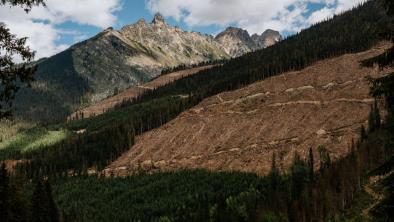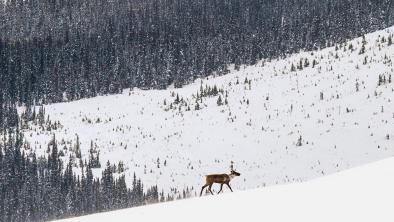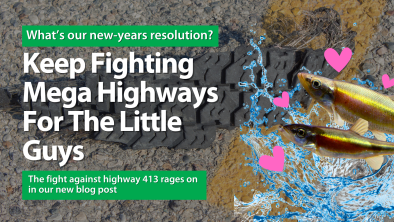Feds Show "Lack of Political Will to Implement Law" for At-risk Species
DeSmog Canada

A new court ruling means that the dozens of animal species that are at risk of extinction across Canada may finally receive the support they need.
A federal court judge found that the Canadian government has been breaking the law in not following through on its obligations under the Species at Risk Act (SARA). The act, established in 2003, obliges the government to develop and implement recovery strategies for animal species in Canada at risk of extinction.
In her ruling, federal court Justice Anne L. Mactavish found that “there is clearly an enormous systemic problem within the relevant Ministries, given the respondents' acknowledgement that there remain some 167 species at risk for which recovery strategies have not yet been developed.”
The request for judicial review was brought by the Wilderness Committee, the David Suzuki Foundation, Greenpeace Canada, the Sierra Club Of British Columbia, and Wildsight, who were represented by Ecojustice, against the Minister of the Environment and the Minister of Oceans and Fisheries, who are tasked with ensuring that SARA is implemented. And while there is a backlog of over 160 species, the case focused on four in particular: the Nechako White Sturgeon, the Pacific Humpback Whale, the Marbled Murrelet and the Southern Mountain Caribou.
Each were listed as a threatened species over five years ago, and have been waiting for a recovery strategy since. Even more important, each live in habitats that are directly impacted by Enbridge's proposed Northern Gateway pipeline, either by its route or by increased tanker traffic. The pipeline recently received approval from the National Energy Board. This made the need for recovery strategies even more pressing, but also meant that important information on the pipeline's impact on these species was missing from the hearings.
The immense backlog in establishing recovery strategies raised concerns that the government didn't take the SARA seriously enough to act on it. “One of our worries was that there seems to be a lack of political will to implement the law,” Sean Nixon, an Ecojustice staff lawyer who worked on the case, told DeSmog Canada. But the ruling gives hope that the backlog will soon be taken seriously.
“Because the language was so strong in the court decision and because the judge also had an expression of judicial disapproval in how the government was acting in regards to the recovery strategy, we're hoping that the federal government will take this seriously,” said Gwen Barlee, policy director at Wilderness Committee, when reached by DeSmog.
And it has already had an impact, at least on these four cases. After the request for judicial review was filed in 2012, the recovery strategy for the Pacific Humpback Whale was finalized, and draft strategies for the other three species in question have been posted for public comment. Once the 60 day window for public comment closes, the government should issue a final recovery strategy relatively quickly. The court will be following the process to ensure that the government follows through.
Repeat offender
This isn't the first time that the government has been taken to court over recovery strategies. Nixon says that Ecojustice has already brought at least six similar cases forward. While they have had success each time, it has become frustrating to both him and to environmental organizations to have to fight for the protection of each animal listed as at risk. Judicial supervision is about all that can be expected, since like much legislation, there are no clear penalties for when the government ignores what it is mandated to do.
“The question is what will happen if the government keeps violating the statute? The answer, sadly, is probably just public interest groups taking them back to court,” he said. Like most legislation mandating parliament, there are no clear penalties if the government takes no action. It speaks to how our parliamentary democracy is meant to function, though, says Nixon: the judicial branch of the government telling the executive branch that it is violating what the legislative branch (Parliament) has implemented as law.
“The fact is that you bring them to court, and [if| their actions are found to be unlawful, that generally, in a democracy, is enough for the federal government to respond and to remedy their unlawful behaviour,” he explained.
“Environment Canada is reviewing the Court’s decision to determine next steps. Our government is committed to the protection and conservation of species at risk,” wrote Danny Kingsberry, a Media Relations officer with Environment Canada, when asked for comment by DeSmog. He emphasized that the government invested $50 million in implementing the species at risk act and has finalized 85 recovery strategies in the past three years. In court, though, the government did not dispute that they have gone against the provisions of the legislation, which state that a proposed recovery strategy must be posted within one year of a species being listed as “at risk.”
Canaries in the coal mine
While legislation like SARA are essential for conservation efforts, Barlee also emphsized the importance of the links between habitat protection and the growing impacts of climate change. While these four species are linked directly to the Northern Gateway pipeline, others of the 167 that are at risk are also directly in the route of and being impacted by the fossil fuel industry. By studying the habitats and ecosystems that keep animal species strong, we're not simply protecting biodiversity, but also maintaining vigilance over our own ecosystems and quality of life.
“[These] species are telling us something: they really are the canary in the coal mine, and they are telling us when their numbers are declining that the habitat that they've relied upon for millennia is no longer healthy enough to support them,” Barlee said. “They're saying that their habitat has been so badly managed that they can no longer survive, and that's eventually going to have repercussions for humans living on Earth.”
Photo: The mighty Humpback Whale summers off the coast of British Columbia. Mary Andrews


